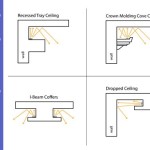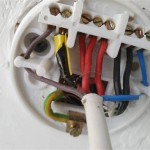Lights In The Ceiling: Essential Aspects to Consider
Lighting plays a crucial role in shaping the ambiance, functionality, and overall aesthetic of any space. When it comes to indoor illumination, ceiling lights are a versatile and effective solution, offering a wide range of options to suit different needs. Understanding the essential aspects of lights in the ceiling can help you make informed decisions and create a well-illuminated and visually appealing environment.
Types of Ceiling Lights
Ceiling lights come in various types, each serving a specific purpose and creating a different ambiance:
- Recessed Lights: Installed flush with the ceiling, these lights provide ambient illumination and can be used to create a seamless and even light distribution.
- Pendant Lights: Suspended from the ceiling by a cord or chain, these lights add a decorative touch while providing focused illumination.
- Chandeliers: Elaborate and often ornate, chandeliers make a grand statement and provide ample lighting in large spaces like dining rooms.
- Track Lights: Adjustable fixtures that allow for flexible lighting arrangements, track lights are perfect for highlighting specific areas.
- Flush Mount Lights: Mounted directly to the ceiling, these lights provide a clean and modern look while offering general illumination.
Lighting Color Temperature
The color temperature of a light source refers to the warmth or coolness of the light it emits. Measured in Kelvins (K), the higher the color temperature, the cooler the light appears:
- Warm White (2700-3000K): Creates a warm and inviting ambiance, ideal for living rooms and bedrooms.
- Neutral White (3500-4100K): Provides a bright and balanced light suitable for offices and kitchens.
- Cool White (5000-6500K): Produces a bluish-white light that enhances visibility and concentration, ideal for task lighting.
Light Intensity and Beam Angle
Light intensity, measured in lumens, indicates the brightness of a light source. The beam angle determines the spread of light:
- Narrow Beam: Focused illumination with a narrow spread, suitable for highlighting specific objects or areas.
- Medium Beam: Balances focused and ambient lighting, providing a wider spread.
- Wide Beam: Produces a broad and even distribution of light, ideal for general illumination.
Dimming Capabilities
Dimming allows you to adjust the brightness of lights to create different moods and accommodate changing needs. Consider lights with dimming capabilities to enhance the versatility and energy efficiency of your lighting system.
Bulb Types and Lifespan
Ceiling lights use various bulb types, including incandescent, halogen, fluorescent, LED, and CFL. Each type has its own advantages and lifespan:
- Incandescent: Warm and inviting light, but low efficiency and short lifespan.
- Halogen: Brighter and longer-lasting than incandescent, but still inefficient.
- Fluorescent: Energy-efficient and long-lasting, but can produce a harsh light.
- LED: Highly efficient, long-lasting, and available in various color temperatures and beam angles.
- CFL: Compact and energy-efficient, but not as long-lasting as LEDs.
Conclusion
Choosing the right lights in the ceiling is essential for creating a well-illuminated and visually appealing space. By considering the type, color temperature, light intensity, beam angle, dimming capabilities, bulb type, and lifespan, you can select lights that meet your specific needs and enhance the overall design and functionality of your interior.

Wafer Lights Vs Can Everything You Should Know

Ceiling Lights How To Use Chandelier Spotlight Recesses

Led Ceiling Lights For Kitchen Bedroom Living Room Slb Blogs

Top 3 Ideas To Light Up Your Ceiling Saint Gobain Gyproc

9 Types Of False Ceiling Light Designs To Glam Up Your Home
40 Led Ceiling Lights For Your Home Office

A Guide To Recessed Lighting 9 Trim Styles Know

6 Steps How To Install Led Strip Lights On Ceiling

Luminea Led Line For Sensory Rooms

30 Bedroom Ceiling Lights Ideas To Make Your Room Look Elegant
Related Posts








